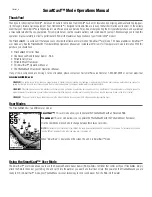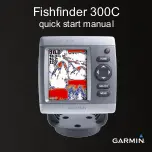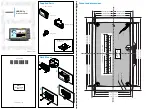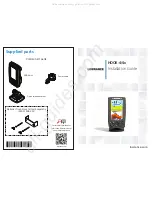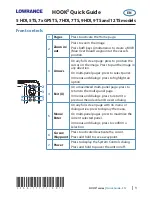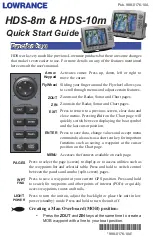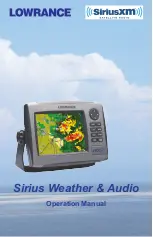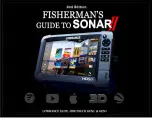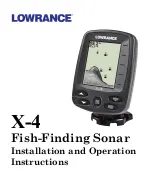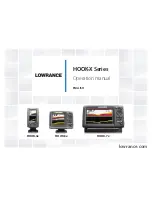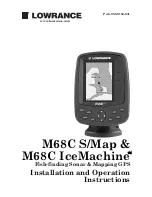
CAUTION:
You will increase the possibility of breaking your line if you use light test pound line on your reel. The RSS is positively buoyant (is buoyant under its own weight plus 0.2 ounces
of bait and lead weight.) The maximum amount of weight for any attachment to the RSS is approximately 0.2 ounces (5.67 grams), and includes the combined weight of any hook, line,
weight, swivel/snap swivel and bait that is attached to the RSS. The RSS itself weighs 1 ounce, and therefore light test line might break.
Store the RSS in a dry, non-metallic container, such as a tackle box, in a separate compartment, and isolated from any metallic devices.
WARNING!
The bottom of the RSS should not be handled during sonar operation, as this may cause physical discomfort and may result in personal injury in the form of tissue damage.
Handle the RSS only by the antenna tower when it has been in the water.
WARNING!
The RSS (Remote Sonar Sensor) is not intended for use by children younger than 6 years old without adult supervision as the RSS may represent a choking hazard to small children.
WARNING!
Handling and/or opening this unit may result in exposure to lead, in the form of solder.
RSS Power
The Advanced Remote Sonar Sensor (RSS) has a non-replaceable Lithium battery with a shelf life of three years that will last for approximately 500 hours
of in-water use (when the nighttime LED is turned off).
Discard the used RSS in compliance with local laws as you would any electronic component or battery.
The RSS has contacts that perceive when the device is immersed in the water. These contacts turn on the Sonar Transmitter/Receiver and begin transmit-
ting the sonar information via RF to the display. The RSS automatically stops using power a few seconds after being pulled out of the water.
WARNING!
Do not place the RSS in a wet area when not in use as this will turn on the RSS and shorten its usable life. Store the RSS in a dry area when not in use to conserve power.
Never place the RSS in a wet area of a boat or on a metal surface that could accidentally power it on.
NOTE:
If the RSS was used in salt water, rinse it with fresh water before storing it.
Powering ON and OFF
Press and release the POWER-MENU key to power the PiranhaMax on. Press and hold the POWER-MENU key until the unit shuts down to power off.
Display
LEFT Arrow Key
POWER/MENU Key
RIGHT Arrow Key
Use a heavy test line,
standard knots, and
tackle such as a swivel.
Handle the RSS by the antenna tower when it has
been in water.
The second leader hole is for using the RSS as a
float. Connect a lighter weight hook line to this
hole. Do not over-weight the hook line as this will
submerge the RSS, causing signal loss.

